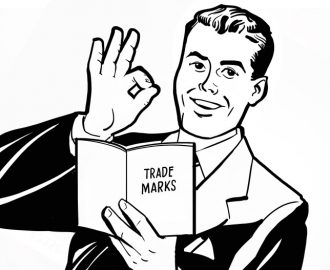
March 26, 2012
Protecting Intellectual Property in Supplier Drawings and Specification Submissions: “Black-Boxing”
Automotive OEMs are highly reluctant, or frequently flatly refuse, to accept drawings or other technical information from component suppliers if that information is marked or otherwise indicated as being confidential. This has led to instances of supplier proprietary information or designs being shared with other suppliers or blatantly “shopped around” among the supplier’s competitors.
While this practice might be effective in the short term to allow the OEM to obtain the best product for the lowest price, it often leads to the developer of the technology being underbid by a competitor who has no engineering or development costs to recover in formulating its price quotation. This leaves the supplier who developed the design or technology in the unenviable position of having provided R&D services to the OEM, free of charge, with no chance of recovering the cost of such services through sales of its product. It also has the undesirable effect of making technology-oriented suppliers reluctant to offer their best component designs to OEMs whom they know or strongly suspect will disclose the suppliers’ proprietary technology to other suppliers. Both situations can adversely effect overall strength, innovation and competitiveness of the auto industry – for OEMs and suppliers alike.
While a completely satisfactory solution to this problem may yet be a long time in coming, suppliers can take measures to at least minimize the probability or effectiveness of “shopping around” by significantly reducing the amount and/or nature of the information provided to OEMs, at least at the proposal or pre-proposal stages.
Some background on at least one aspect of the problem may be helpful to understand the industry’s evolution to the current state. In this regard, some observers believe that a portion of the blame must fall on the shoulders of both the suppliers and the OEMs.
Historically, automotive OEMs had large staffs of in-house R&D engineers and designers who designed and developed many more vehicle components than they do today. These OEM-originated designs were disclosed (confidentially, it should be noted) to various suppliers who then quoted to manufacture (and perhaps further refine) the OEM’s designs. Thus OEM engineers, and even purchasing personnel, were much more intimately involved in the component development process in those days. Accordingly, OEMs routinely and justifiably demanded very detailed engineering information from each supplier who was bidding on the OEM-originated component in question. Furthermore, in true “quote-to-print” situations, the OEMs already had this level of information (they had, after all, developed it themselves) and became accustomed to dealing with that level of information in evaluating supplier proposals.
Even though the automotive industry has since moved to the current state where the supply base performs all or the majority of the design and development of most vehicle components, there still remains strong momentum behind OEMs (Purchasing and/or Engineering) demanding far more detailed information then they really need (at least for RFQ and pre-quote evaluations). In order to get the business, many suppliers are sometimes overly eager to provide such information. Contributing to this, of course, is the natural and understandable motivation for suppliers to provide more information than they really should (again, at least at the proposal or pre-proposal stage) in order to “wow” the OEMs with the superior characteristics of their products.
This over-disclosure (and over-demand) of such highly detailed technical information is certainly not the sole factor behind the “shopping around” problem. Even if better handled by both suppliers and OEMs, minimizing such disclosures would not by any means provide a complete solution to the problem. Perhaps, however, better and more insightful and discrete management of the information provided for OEM evaluations might lessen the magnitude of the problem or at least reduce the risk that complete proprietary details will be handed over to one’s competitors. It would seem that withholding unnecessary information would at least help level the playing field between design-originating suppliers and competitors who would then have to do more engineering and development themselves.
Suppliers should explore ways to limit proposal and/or pre-proposal disclosures to the level really needed by OEMs to evaluate suppliers’ designs. Some types of information that might be held back or limited during the proposal or pre-proposal stages are:
- Material formulations, unless essential to demonstrate superior characteristics, and then only in general terms ̶ not detailed chemical formulations or recipes (When material formulation information is required for environmental or safety compliance purposes, the International Material Data System (IMDS) and/or Material Safety Data Sheet (MSDS) systems should be used, with the disclosure restricted to only the data required.)
- Tolerance stack-ups
- Critical dimensions
- Exact shapes or profiles, where possible, when the configuration of all or part of the component is proprietary (more of a “fits-in-the-required-envelope” approach could be tried here, if feasible)
- Critical angles, radii or relative geometric relationships
- Finite element analyses
- Hydrodynamic features
- Densities
- Electrical or fluid resistance values
- Component or sub-component material hardnesses
- Spring rates
- Test set-ups or verification procedures
- Information about important and possibly patentable subject matter
- Important proprietary know-how or processes (whether possibly patentable or not)
- Internal cost cards
- Internal call reports
- Internal monthly reports
- Price or other proprietary information of your own suppliers
- Business or technical strategies (only very general “press-release” type of information – not detailed or especially sensitive strategies or business plans)
- Any other critical or proprietary information that is not essential (at least not in full detail) for evaluation by the OEM and/or that would significantly ease the engineering/development burden of a competitor (or substantially reduce the competitor’s price) if handed over, free of charge
Of course not every one of these suggestions will be applicable or feasible in every case, and not all will represent information that is actually proprietary for a given product. Even where any of these items can (and should) be withheld at the proposal or pre-proposal stage, the remaining information that is supplied to the OEM will typically have to include convincing performance information.





































